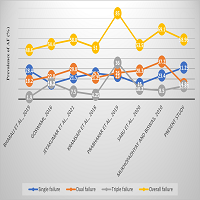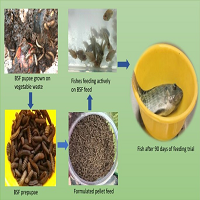UNDERSTANDING THE RELATIONSHIP BETWEEN MENSTRUATION AND MENOPAUSE
Although, there are exceptions to the rule, women generally experience ‘menopause’ between the ages of 48 to 54, within which time the cessation of all menstrual bleeding becomes a reality. However, many women find that their bodies desist menstruating in their late thirties (premature menopause) or in their early forties.1 The commencement of menopause is triggered when the ovaries relinquish their responsibility for the production of estrogen. ‘Estrogen’ is an important sex hormone that is primarily produced in the ovaries, and one of its main functions is to regulate menstrual cycles, and moderate the inception of menopause.2
Interestingly, a small portion of the female’s estrogen supply is produced in the body’s fat cells. It is estrogen that hormonally prepares the uterus to accommodate the fertilised egg, and this remarkable phenomenon happens when estrogen radically stimulates the thickness of the uterine lining, so as to stabilise the implanting capacity of the fertilised egg.3
Three types of estrogen exist in the female’s body: the first of these is referred to as ‘estradiol’. It is regarded as the most potent of the three types, and it is manufactured in the ovaries. The next of these estrogen constituents is called ‘estrone’, which is produced from estradiol, and the final component of estrogen is known as ‘estriol’. It is also produced in the ovaries, but in much smaller quantities than either of the other two.4 The subtle balance of the estrogen amalgam of these three constituents helps to reduce the incidence of heart attack, slows the rate of bone loss, reduces vaginal dryness, improves skin tone, and it can regulate mood swings, in the context of both menstruation and menopause. With the onset of menopause, estrogen levels disminish markedly, but they do not drop to Zero, as some estrogen is still produced in the fat cells which continue to provide the supporting tissue around the ovaries. By utilising precursors produced by the adrenals, estrogen is also formed in the intestinal tract.5 It is worth contemplating that one reason why women tend to gain weight after menopause is linked with the body’s capacity to confiscate even the small pools of estrogen made available by hormonal reservoirs of fat cells in the supporting tissue around the ovaries, and in the intestinal tract.
FOCUSING ON THE TRANSITION FROM MENSTRUATION TO MENOPAUSE
Early or premature menopause can happen due to any of a range of factors, including the following:
● Although rare, the body’s immune system which normally fights off diseases, may mistakenly attack the ovaries and keep them from producing the female hormones which regulate menstruation.6 Other autoimmune diseases such as thyroid disease, rheumatoid arthritis, and even chronic fatigue syndrome may also disrupt the otherwise regular patterns of menstrual balance and harmony. For example, research has demonstrated that women with myalgic encephalomyelitis/chronic fatigue syndrome (ME/CFS) suffer from persistent and extreme tiredness, headache, feelings of chronic weakness, muscle and joint pain, memory loss, insomnia, and marginalised eyesight. Women with these problems are significantly more likely to experience early or premature menopause.7
● Women who smoke are more likely to experience menopause as early as two or three years before non-smokers, depending on the length of duration which characterise the woman’s smoking habit. In addition, women who have smoked for ten years or more may also be afflicted with more severe and painful menopause symptoms such as acute stomach discomfort and intense muscle cramps.5 Moreover, research also shows that women who are long-term smokers will be not only succumb to premature menopause, but they will die about two years earlier than those women who are not smokers.8
● Chemotherapy or pelvic radiation treatments for cancer are notorious for inducing premature menopause. The problem is that chemotherapy treatments tend to damage women’s ovaries, thereby causing a women’s menstruation periods to cease unpredictability at any time. The resultant menstrual cessation may persist for just a while, or it may shut down the menstrual system forever.9 Chemotherapy may also adversely affect the fertility-organs and hormonal production mechanisms associated with pregnancy, such that a woman may not be able to get pregnant again, or never be able to get pregnant a first time. Although it is to admitted that chemotherapy or radiation do not necessarily cause infertility or unanticipated menopause, the older a woman is at the time of chemotherapy or radiation, the more likely it is that she will experience acute menopause and permanent infertility.10
● More dramatic interventions such as the surgical removal of both ovaries, called a bilateral oophorectomy are likely to precipitate menopausal symptoms almost immediately. After this surgery when both the women’s ovaries are discarded, her menstrual periods will literally be eliminated, and her hormonal levels will immediately be significantly diminished. In many cases intense menopausal symptoms become manifest and hot flashes will be greatly magnified, while sexual desire will dwindle and quickly be depleted, thereby necessitating the implementation of hormone therapy.11
● It sometimes happens that women will confront the problem of incessant bleeding in the context of a menstrual cycle or independently. In such cases it is generally recounted that a hysterectomy is the best way to stop the bleeding by the complete removal of the uterus, though in most cases women patients are fortuitously allowed to keep their ovaries intact. This being so, it follows that personal pregnancy is no longer an option, in as much as women who have undergone a hysterectomy will no longer have periods, or the capacity to become pregnant. However, given that the ovaries have been preserved, women who have had their uterus removed experience the almost immediate symptoms of menopause. Due to the fact that their ovaries are still functional, and their ovaries seem, almost miraculously, to produce an array of the very hormones which largely govern the extent to which the symptoms of menopause will infiltrate the women’s body. In addition, if a women who has had to undergo the hysterectomy is young enough, she might still have to confront the experience of menopause a couple of years earlier than would otherwise have been anticipated.12
● Women with a family history of chronic disease which serves to act as a catalyst for menopause are more likely to experience an early or premature menopause than are those women without disease-disposing menopausal intrusions.
● Research has revealed that women suffering medical conditions of HIV whose infectious parameters are intractable, or ineffectively contained by the medicines being prescribed, the woman involved is very likely to experience the acute symptoms of early or premature menopause. It has also been shown that women who are dealing with HIV are far more likely to have more severe and debilitating hot flashes than women who are not afflicted with the virus.13
● One of the more recent medical discoveries related to menopause is that a surprising number of women experience the symptoms of early and premature menopause because they have a congenital deficiency such that they are born without certain chromosomes responsible for the endocrinal and physiological management of menopause. Similarly, some women have been found to have problems with the ‘menopausally-related’ and designated chromosomes that signal the production of endocrinal messaging which misguidedly prompts early episodes of menopause . For example, women with the condition called Turner’s syndrome are born without all or part of one X chromosome. As a consequence, their ovaries fail to get appropriately structured at birth.14 This being so, the regulation of menstrual cycles for some women, including the scheduled sequencing of menopausal episodes are being seriously disrupted.
In PART 2 of this series, I will in the next issue of WHOJ address the issues associated with the efficacy of estrogen therapy for menopausal women.






